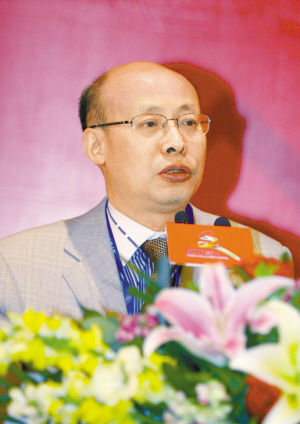中欧文化产业合作:差异中蕴含商机
 |
 |
 |
Chengyu Xiong:Differences bring opportunities
“The cultural industries in China are young with a short history of about 7 or 8 years, while Europe boasts for its developed cultural industries resulted from an effort over ten years. But we have a huge market that Europe is yearning for. These differences can create unlimited opportunities for both parties in the cooperation in this field.”Professor Chengyu Xiong, Director of National Research Center for Cultural Industry Tsinghua summarized his point of view at the beginning of the interview.
He illustrated that there are mainly three differences in the development of cultural industries between China and Europe. First, the industral structures are different: it’s larger in China, consisting of creative service, production and sale, which are implemented in mass media, publishing, broadcasting, television & movie, exhibition and advertising, while Europe focuses on creative service which is transmitted in design and advertising and implemented in performance arts, television & movie, and sports. Secondly, the organizations are different: the medium and small-sized enterprises have formed the backbones in the development in Europe, while China relies on mainly the big state-owned enterprises. Thirdly, the development stages are different: Europe, who has acquired a large amount of intellectual property rights can have the products made anywhere, while the products in China are made locally, which means that there’s still much room for improvement in the production of original works and the pursuit of the value in the intellectual property rights.
In Professor Xiong’s opinion, the development of the cultural industries in China needs a transfer from production to service and the pursuit of the value in property rights. In the process, China can learn from Europe’s successful experiences. In the mean time,the huge market in China can provide what Europe needs most. Naturally, the cooperation between the two parties can create unlimited opportunities and mutual benefits in due course.
When talking about the cultural industries in Shenzhen, Professor Xiong commented,“the China International Cultural Industries Fair is first hosted in Shenzhen and Shenzhen has successfully explored the market-oriented operation through this platform and attracted a large crowd including famous experts and authorities. However, further down-to-earth work and more fruitful practice needs to be carried out.”(Wei Ouyang)
“文化产业在中国的发展时间不长,只有七八年,但是中国拥有巨大的市场;欧洲的文化产业经过10多年的发展已相对成熟,但是市场却不大。中欧文化产业上存在的差异为双方在这一领域的互补与合作提供了无限商机。”清华大学国家文化产业研究中心主任熊澄宇教授,在接受本报记者专访时,开门见山地亮出了自己的观点。
熊澄宇说,中欧文化产业的不同主要体现在以下三个方面:
首先,产业结构不同。中国的产业结构较宽泛,包括创意、生产和销售整个产业链,涵盖传媒出版、广播影视和展览广告等;而欧洲则是以创意为核心,以设计和广告为载体,涵盖演艺、影视和体育。
其次,产业组织上不一样。欧洲是以中小企业为骨干在发展,而中国则倚重大企业,比如中国演艺集团、中国出版集团。
再者,发展阶段不一样。掌握了大量知识产权的欧洲可以将产品放到任何地方生产,而中国的产品只能在本地生产,中国还需拓展原创作品及其在产权领域的价值。
熊澄宇认为,中国的文化产业需要从生产向服务发展、从产品向产权过渡,而成熟的欧洲市场为中国提供了值得借鉴的成功经验;中国产业文化的快速发展以及巨大的市场对欧洲又形成了极大的吸引力。中欧双方合作的前景广阔,优势互补的过程中能够创造无限商机。
最后,在谈到深圳文化产业的发展情况时,熊教授说:“文博会最早在深圳举行,深圳利用这一平台成功探索了市场运动模式,并吸引了大量人流,文博会已经成为深圳的一个品牌。不过,在展示、呈现和交易后,深圳还需要将以后的工作进一步做实。”
(深圳特区报记者 欧阳炜)



